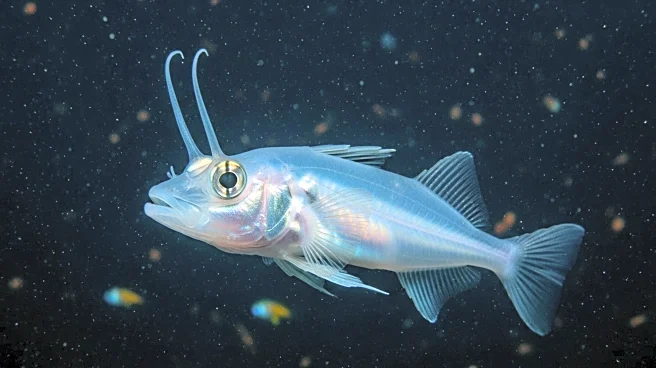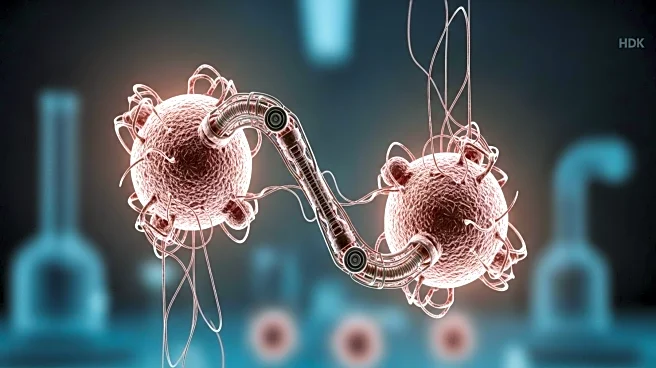What's Happening?
In a recent study published in PLOS Biology, researchers have uncovered the remarkable survival mechanisms of the Paralvinella hessleri worm, a species thriving in the harsh environment of hydrothermal vents in the Pacific Ocean. These vents, located deep on the ocean floor, emit boiling water and toxic gases such as hydrogen sulfide and arsenic, creating one of the most inhospitable environments on Earth. Despite these conditions, the Paralvinella hessleri worms not only survive but flourish. The study, led by Dr. Hao Wang, utilized a remotely operated vehicle to explore these depths, revealing the worms' unique adaptations. The worms' bright yellow color, a result of their ability to detoxify arsenic by combining it with sulfur to form a non-toxic mineral called orpiment, is a key survival strategy.
Why It's Important?
The discovery of the Paralvinella hessleri worms' survival strategies offers significant insights into biological resilience and adaptation. Understanding how these organisms manage to detoxify arsenic and other harmful substances could have broader implications for environmental science and medicine. The worms' ability to neutralize toxins in such extreme conditions suggests potential applications in developing new methods for environmental remediation and detoxification processes. This research could lead to innovative approaches to managing environmental toxins, benefiting industries and communities dealing with pollution and contamination.
What's Next?
Future research is needed to delve deeper into the molecular mechanisms that enable the Paralvinella hessleri worms to thrive in such extreme environments. Scientists aim to explore the biological pathways involved in the worms' detoxification processes, which could reveal new insights applicable to other organisms or even human applications. The study's findings may inspire further exploration of extreme environments on Earth and beyond, potentially leading to discoveries of other resilient life forms and their unique adaptations.
Beyond the Headlines
The study of Paralvinella hessleri worms highlights the potential for biological processes to inform technological and environmental solutions. The worms' natural detoxification system could inspire biomimetic approaches in various fields, including water purification and pollution control. Additionally, the research underscores the importance of exploring extreme environments, which may hold keys to understanding life's adaptability and resilience, offering lessons for addressing challenges posed by climate change and environmental degradation.











